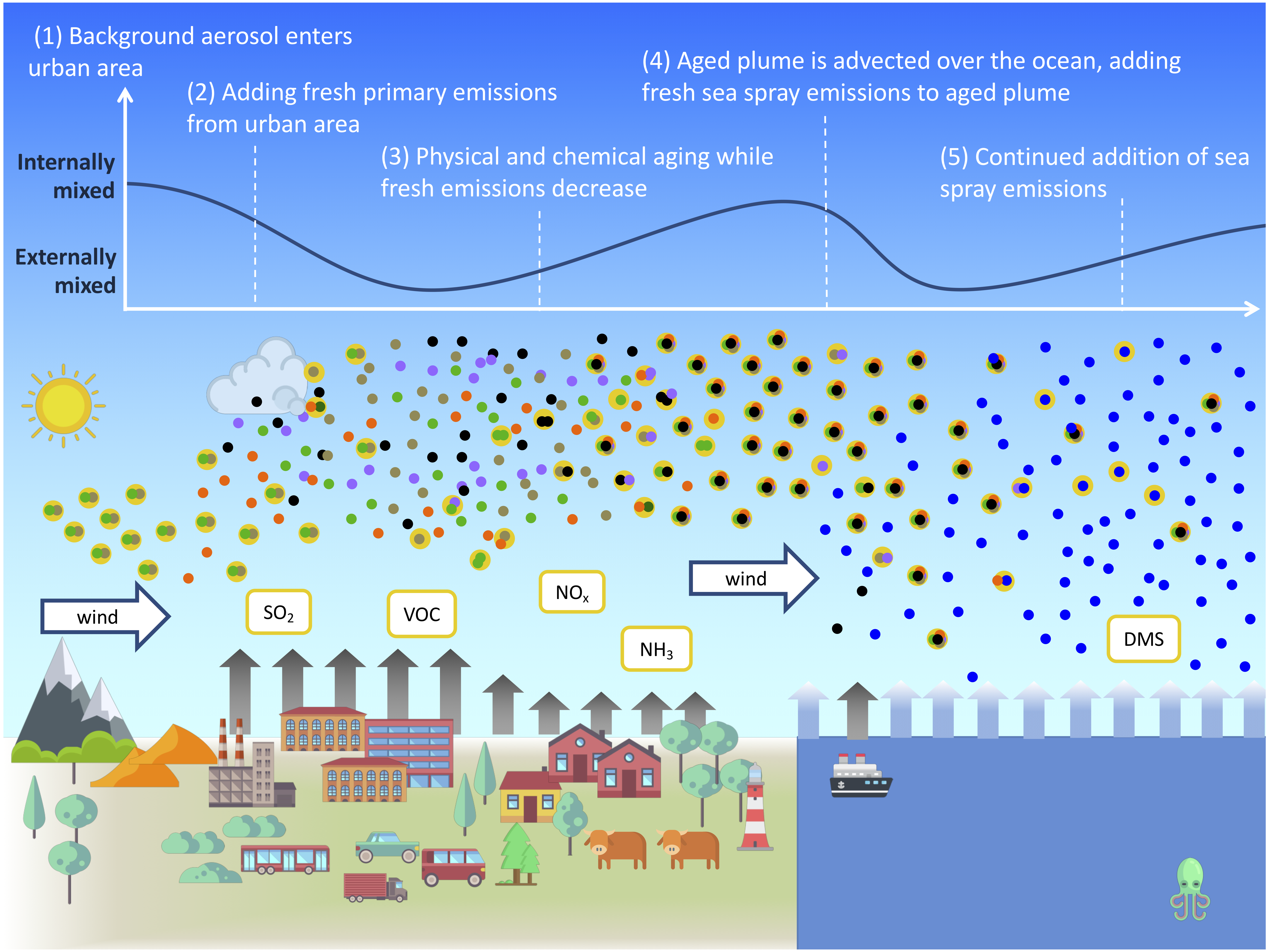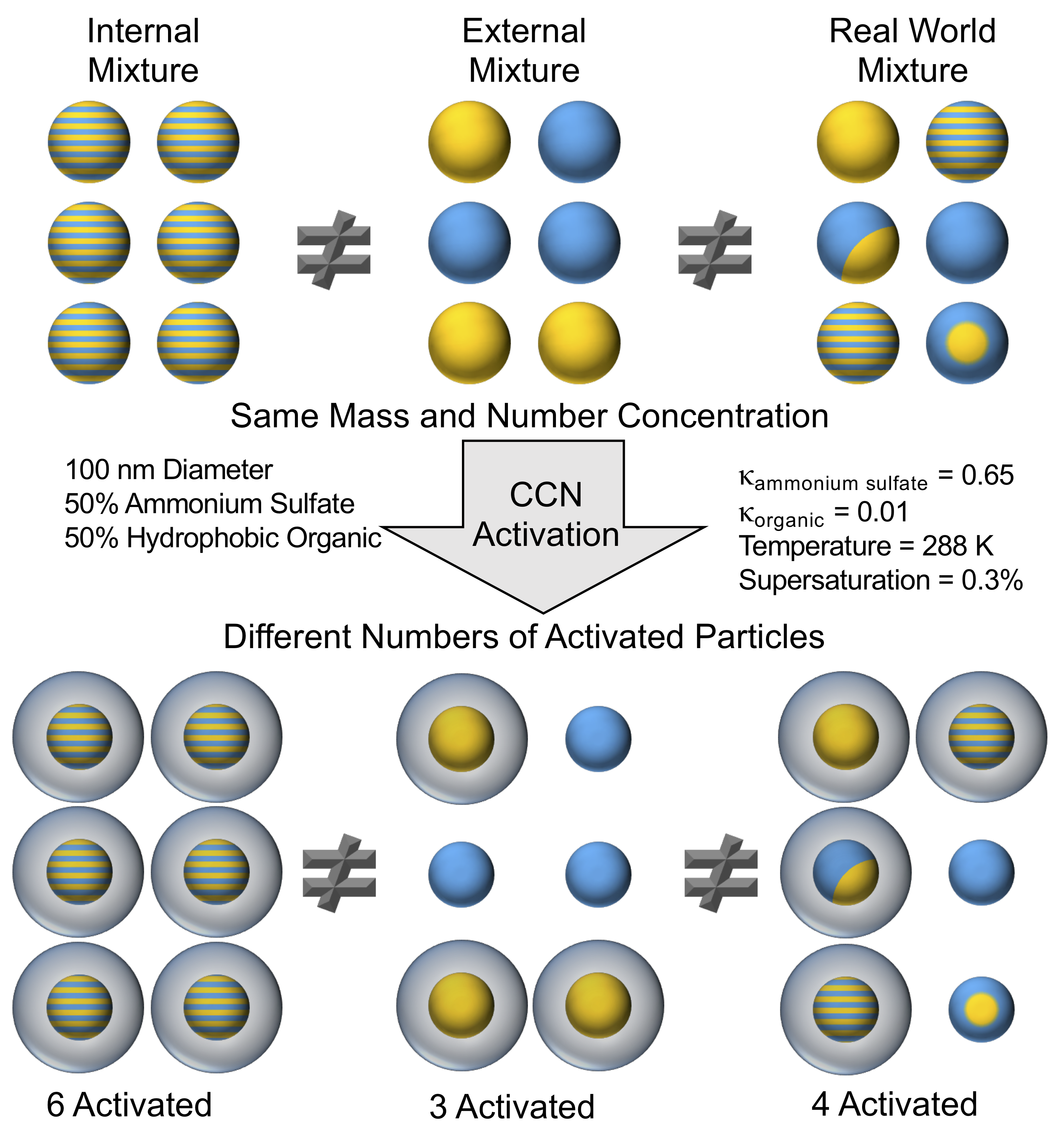Aerosol mixing state: Measurements, modeling, and impacts
Submitter:
Riemer, Nicole — University of Illinois Urbana-Champaign
West, Matthew — University of Illinois at Urbana-Champaign
Area of research:
Aerosol Processes
Journal Reference:
Science
The aerosol mixing state describes the make-up of individual aerosol particles in the atmosphere and how they are assembled into a population. This is important for understanding climate impacts of aerosol particles. This review paper precisely defines the aerosol mixing state, describes methods for measuring and modeling it, and explains what is currently known about its climate impacts.
Impact
This review paper was motivated by the fact that aerosols influence climate by impacting the Earth’s radiative balance, and how this happens depends on the aerosol mixing state. For example, aerosol particles scatter or absorb sunlight depending on how their constituents are mixed. If soot particles are coated with organic material, they will absorb more light than in a situation where soot and organics reside in separate particles. This changes the heating of the atmosphere where the aerosol resides. Similarly, the propensity to form cloud droplets or ice particles on aerosol nuclei differs between coated soot particles and bare soot. These differences in the initial formation process of clouds propagate and determine how much sunlight clouds reflect back into space, a key process in determining the Earth’s energy budget.
Summary
Aerosol mixing state is a very challenging topic because there is a tremendous amount of information (in principle, the precise composition and structure of every individual particle), and measuring and modeling this accurately is pushing the boundaries of our current experimental and modeling capabilities. In addition, the community has not always agreed on terminology relating to mixing state. In this review paper, we laid out precise definitions and metrics for different aspects of the aerosol mixing state, which we hope will help clarify communication. We also gave a historical and current overview of the experimental techniques available to quantify mixing state, with a special focus on single-particle-based techniques, and how the various aerosol modeling techniques approximate mixing state and how this causes errors. Finally, we described the state of the science around climate impacts of mixing state, focusing on cloud condensation and ice nuclei concentrations, as well as aerosol optical properties. We identified challenges going forward, especially the need to better connect measurements and models of mixing state.



